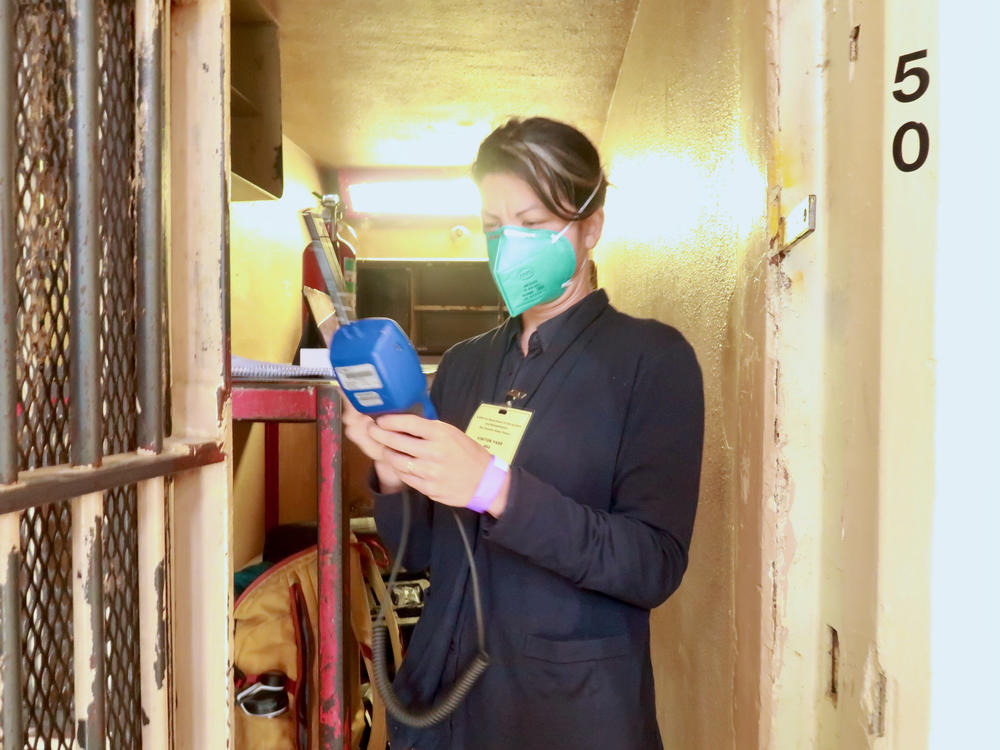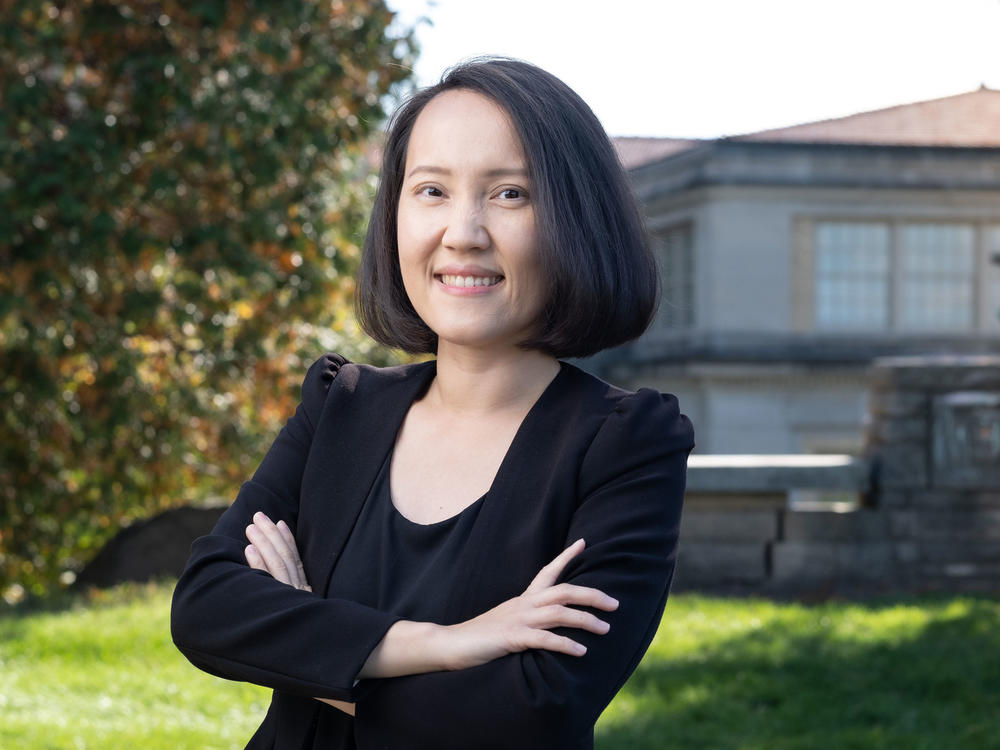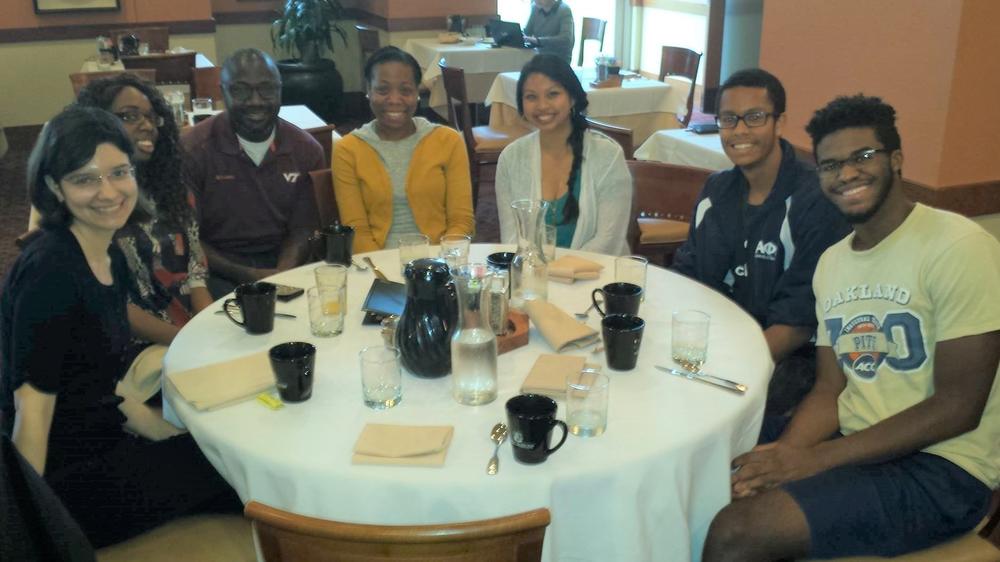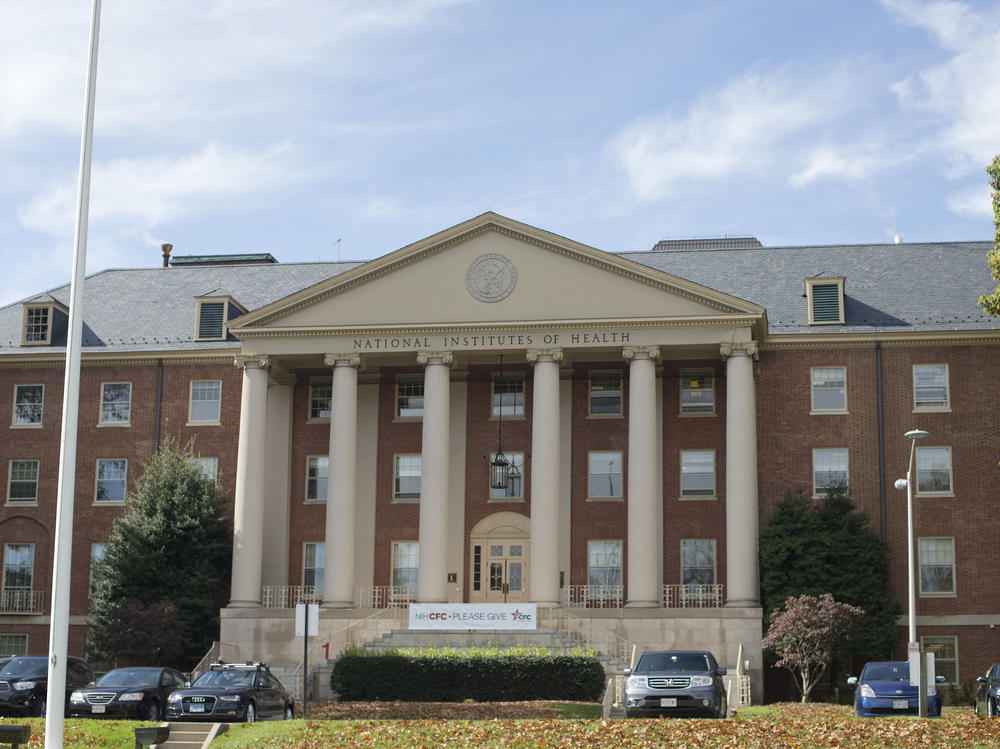Loading...
Section Branding
Header Content
Southeast Asians are underrepresented in STEM. The label 'Asian' boxes them out more
Primary Content
When Kao Lee Yang received a nomination from her university for the Gilliam Fellowship by the Howard Hughes Medical Institute for underrepresented groups in science, technology, engineering and math, she was thrilled. She's spent years working toward her doctorate in Alzheimer's research at the University of Wisconsin-Madison.
Yang is Asian American, and more specifically is Hmong American, part of a small minority in the United States with just 327,000 people.
Though the Hmong population in the U.S. is growing, Hmong Americans are still underrepresented in STEM fields and have lower education rates and higher poverty rates overall, compared to the U.S. population at large.
For example, while 24% of all Asians in the U.S. have obtained an additional degree after college, and 13% of all Americans have, just 6% of Hmong Americans have, according to the Pew Research Center's 2019 analysis of Census Bureau data. To add to that, a very low percentage of Hmong Americans actually go into STEM fields.
That's why Yang said she was "blindsided" when HHMI emailed her academic adviser saying she wasn't eligible for the fellowship because she didn't meet their requirements for who is considered underrepresented.
Though the National Institutes of Health acknowledges that underrepresentation can be determined on a "case by case" basis, people who identify as Asian or white are not seen as underrepresented in STEM, according to standards set by the NIH.
That means certain fellowships, grant funding and educational opportunities that are meant for underrepresented groups, such as Latino, Black, and Indigenous people, for example, are not always extended toward Asian American applicants. The opportunities are designed to elevate groups who are historically marginalized and make sure STEM workplaces are more inclusive and equitable.
So Yang, who said she has never met another Hmong scientist in her field, said it made no sense to her that she wasn't considered underrepresented.
"I was dumbfounded," Yang said. "I did wonder how HHMI came to that determination when I have had such a hard time finding other Hmong American scientists and scientific spaces."
Yang isn't the only one who's experienced the contradictions that come with falling under the broad category of "Asian" in government data collection. Asian Americans have been calling attention to the issue for decades.
Hmong, Vietnamese, Filipino, Laotian, and Cambodian Americans all fall under the broad category of Asian, but their experiences the U.S. when it comes to things like education levels can vary greatly from other Asian groups such as Chinese, Korean, Indian and Japanese. Some South Asian groups such as Bhutanese and Burmese also face lower levels of educational attainment.
Because of the way HHMI looked at Asian Americans as one group, Yang was not considered to be underrepresented — effectively shutting her out from an opportunity that claims to be for someone exactly like her.
Why advocates say more nuanced data is important
"Is every Asian American group underrepresented in higher education? Obviously that's not the case," said Janelle Wong, a professor of Asian American studies at the University of Maryland and a co-director of AAPI Data.
"Indian and Chinese students are the largest groups applying to these programs. And while they do often face implicit bias on campuses, they're not facing systemic exclusion to access to higher education," Wong said.
Wong has been advocating for data disaggregation in the Asian American community for years.
Disaggregation would involve collecting more specific data on Asian sub-groups so that a person's country of origin is apparent, rather than just grouping people together from the entire continent. The data would show specifically if someone was Vietnamese American, or Cambodian American, for example, rather than simply classifying them as Asian.
That kind of detail would allow policymakers, health care professionals, educators and even institutions such as the NIH to better examine the nuances of different Asian populations, because different groups have different needs, experiences and beliefs. The same argument has been made for other racial groups, too, particularly Latinos.
Wong said the issue isn't just about collecting better data — it's about justice and civil rights, too.
"This is both a data quality issue and a data justice issue," she said.
She said lumping all Asian Americans together in one racial category effectively reduces the experience of millions of people — not just when it comes to assessing job or educational candidates, but also for anyone trying to understand their political beliefs, education level, income inequality and health outcomes as well. For example, data on the broad category of Asian Americans show that a vast majority are Democratic voters. But if the data is further broken down, it reveals that Vietnamese Americans more often identify as Republican.
Rachel Sklar, a post-doctorate scholar in environmental health outcomes at the University of California San Francisco, is Filipino and says she has been denied an academic opportunity in the past because she falls under the "Asian American" category.
Sklar said Filipinos in the U.S. experience what's called "downward intergenerational mobility." In other words, U.S.-born Filipinos are less likely to obtain a bachelor's degree than their foreign-born parents. So efforts to boost groups struggling to obtain higher education should apply to Filipinos, Sklar said, but instead they're hidden in the broader data on Asian Americans and educational achievement.
"The experiences of groups like Filipinos are just erased. They're deemed invisible," Sklar said.
More nuanced data could also be helpful to doctors treating Asian American patients, and policy makers making decisions about targeting health resources to different communities.
Sklar points out that Filipino women have high rates of hypertension and diabetes and other risk factors that can impact childbirth.
"Yet, because they're grouped as Asians, they're rarely considered for the types of resources that they need for safe birthing and pregnancy," she said.
Questions of identity, and guilt
The dichotomy of being considered a minority by some institutions, but not by others, is emotionally confusing, as well.
Brittany Boribong, who was nominated to the Gilliam Fellowship in 2018 — the same one Yang was nominated for — had almost the same experience as Yang.
Boribong is Laotian American and the daughter of refugees. She and her brother are the first in her family to go to college, and she is the first to continue her education beyond a bachelor's degree. While she was getting her doctorate at Virginia Tech, she was nominated by her school for the fellowship.
Like Yang, the fellowship told Boribong she wasn't eligible. For her, it brought up a wave of guilt, like she was taking up an opportunity from someone else, a feeling she experienced while participating in a different fellowship for underrepresented people in STEM.
"I'm technically Asian American," she said, but she couldn't help thinking, "Do I belong here? Am I taking someone else's spot? ... I always felt like I snuck my way in, that I shouldn't have been there."
Being told by the Gilliam Fellowship that she wasn't eligible was embarrassing, Boribong said, and it was the first time she had been told so bluntly she wasn't underrepresented.
"I just look around the room and it's like, where are the other Lao scientists? If I'm not considered a minority, then where are we?"
She and her advisor had to then go through the process of making a case that Boribong is underrepresented. Eventually, they did allow her nomination through, but it pushed her away from applying to other fellowships at HHMI.
There are growing calls for changing the way we collect data
Collecting more specific data about Asian Americans is something scholars and activists have been calling on for years, and it's been picking up traction.
In November, lawmakers in New York re-upped their legislation calling for disaggregation of data on Asian Americans and Pacific Islanders.
Former Gov. Andrew Cuomo was presented with the same bill before he resigned from office but refused to sign it into law, citing logistical and financial issues of having to create new, uniform methods of collecting data, which is the most common opposition to data disaggregation. Others who have opposed efforts to disaggregate data have also cited privacy concerns, particularly related to immigrant communities, or said that it could divide different Asian groups.
But advocates of the law have pushed back against those concerns and are now asking Gov. Kathy Hochul to sign it into law.
"Asian-Americans and Pacific Islanders in New York represent 30+ different ethnicities and speak numerous languages. Failing to record & report that diversity is harmful," State Sen. Julia Salazar, who co-sponsored the bill, tweeted.
When it comes to STEM academia in particular, the push for change has been incremental. Both Sklar and Boribong hadn't realized how many others had gone through the same experience until Yang tweeted about her experience in October.
Elevating the conversation, though, might lead to some change. After Yang's tweet spread on social media and after being questioned by NPR about their process of determining who is underrepresented, HHMI has updated their standards.
As of Nov. 12, the fellowship now said it recognizes "there are other ethnic populations who might be underrepresented but who are not currently designated as such by the federal government" and will "continue to consider" how they can better determine underrepresentation in STEM.
They've also extended the opportunity to Yang and a few others to complete their application, but Yang said she will not be moving forward with the process.
The larger problem that Sklar points out is that many other fellowships in STEM academia still take their guidance on diversity and representation from the NIH. The NIH, when asked by NPR, said they are required to take their guidance on race and ethnicity from the 1997 standards of the White House's Office of Management and Budget.
But the OMB standards that same year also said the racial and ethnic groups that are outlined are a minimum base for gathering data, so agencies can go into further detail if they choose to. The Department of Health and Human Services guidance also said agencies are encouraged and can go into further detail. Plus, in 2012, a report to the NIH director outlined concerns about the lack of disaggregated data when it came to minority groups, specifically Latinos.
Sklar said if the NIH doesn't change their process, she doesn't expect much to change. In the meantime, she is focusing on what she can control: choosing to disaggregate the data she uses in her own scientific research.
For her, showing the vast differences in the Asian American population in her own research is proof in itself that the same should happen on a wider scale.
"The research needs to come first," Sklar said, "And show that, 'Wow, look at these experiences we've been making invisible just by glossing over and assuming a very heterogeneous group is actually homogeneous.'"
Copyright 2021 NPR. To see more, visit https://www.npr.org.




